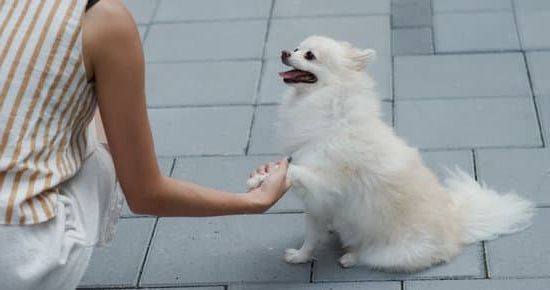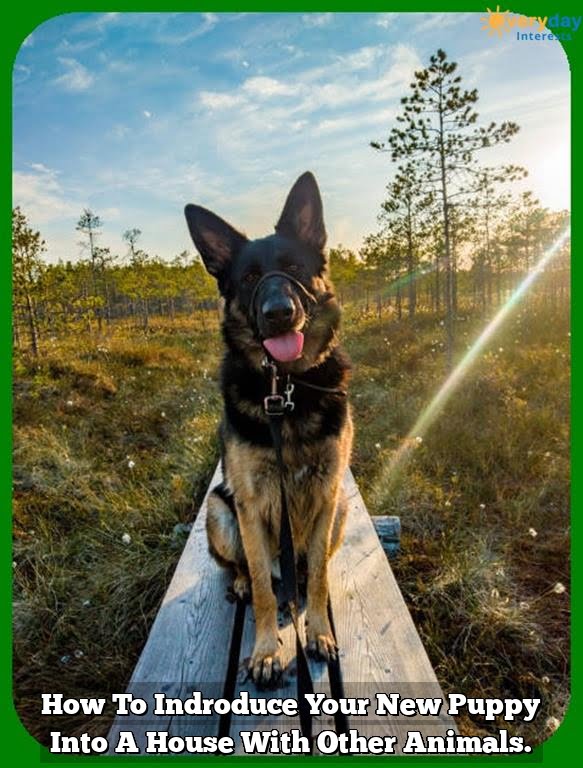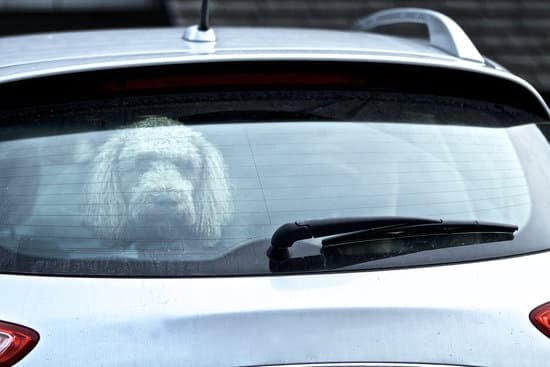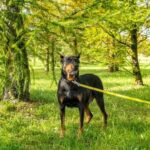Training a dog not to attack other animals is of utmost importance for the safety and well-being of both the dog and other animals. Aggressive behavior can lead to harmful encounters, resulting in injuries or even fatalities.
In this article, we will delve into the reasons behind dog attacks on other animals and explore effective techniques to prevent such behaviors. By building a strong foundation through socialization, establishing obedience, managing triggers, and utilizing reward-based training, dog owners can promote a harmonious coexistence between their furry friends and their animal counterparts.
In order to control a dog’s aggressive tendencies towards other animals, it is essential to understand the root causes behind these attacks. Dogs may exhibit aggression due to fear, territorial behavior, lack of socialization, or past traumas. By identifying the underlying motivations behind their aggression, we can employ targeted training techniques to address and modify this behavior.
Building a strong foundation through early socialization plays a critical role in preventing dog attacks on other animals. Exposing dogs to various species and environments from an early age helps them learn appropriate behavior when interacting with fellow creatures. By providing positive experiences during socialization exercises, we can instill confidence in dogs and reduce the likelihood of aggressive reactions towards other animals.
Establishing obedience is another crucial aspect of preventing dog attacks on other animals. Teaching basic commands like “leave it” and “stay” empowers owners with control over potentially triggering situations. These commands allow dogs to understand boundaries and respond appropriately when faced with stimuli that might otherwise provoke aggressive behaviors.
Understanding the Root Causes of Dog Attacks on Other Animals
When it comes to training a dog not to attack other animals, it is essential to understand the underlying reasons behind such behavior. By delving into these root causes, dog owners can better address and prevent aggressive tendencies in their furry friends. There are several factors that contribute to a dog’s tendency to attack other animals, including fear, territorial behavior, lack of socialization, or past traumas.
Fear is a common trigger for dog attacks on other animals. Dogs that feel threatened or perceive another animal as a potential threat may react aggressively out of self-defense. This fear response is often rooted in negative past experiences or traumatizing encounters with other animals. To address this issue, pet owners should focus on building their dog’s confidence through positive reinforcement training techniques and gradual exposure to different animals in controlled environments.
Another factor that contributes to dog attacks on other animals is territorial behavior. Dogs naturally assert territorial dominance over their living spaces and possessions, which can extend to interactions with other animals in these areas. It is crucial for dog owners to establish boundaries early on and teach their pets that they do not need to protect every inch of territory. Consistent obedience training and rewarding non-aggressive responses help reinforce the message that aggression is unnecessary.
Additionally, the lack of socialization plays a significant role in dogs attacking other animals. Dogs that are not properly socialized from an early age may display fear or aggression when encountering unfamiliar animals or environments later in life.
To prevent this from happening, pet owners should focus on exposing their dogs to various situations, people, and animals during the critical socialization period between 3 and 14 weeks of age. Gradual introductions combined with rewards for calm behavior will help alleviate any anxiety or aggressive tendencies towards other animals.
By understanding the root causes behind dog attacks on other animals, pet owners can take proactive steps towards preventing and addressing these behaviors effectively. Recognizing fear, territorial behavior, lack of socialization, and past traumas as potential triggers allows dog owners to tailor their training methods accordingly. With patience, consistency, and positive reinforcement, dogs can learn to coexist peacefully with other animals, ensuring a harmonious living environment for everyone involved.
Building a Strong Foundation
Socialization plays a crucial role in preventing dog attacks on other animals. By exposing dogs to various animals and environments at a young age, owners can help build a strong foundation of positive interactions and reduce the risk of aggressive behavior towards other animals later in life.
- Introduce your dog to different animals: Start by gradually exposing your dog to different types of animals, such as cats, rabbits, or small rodents. Always ensure that these initial interactions are supervised and controlled, allowing your dog to observe and get accustomed to the presence of other species.
- Arrange playdates with other dogs: Regular playdates with well-behaved and friendly dogs can help your dog develop proper social skills while interacting with members of its own species. This can teach them appropriate behaviors, communication cues, and how to understand boundaries.
- Enroll in puppy classes or training programs: Puppy classes not only provide early obedience training but also offer opportunities for socialization with other puppies. These classes are typically conducted in a controlled environment under the supervision of a professional trainer who can guide both owners and their dogs through appropriate interactions.
- Exposure to different environments: In addition to introducing your dog to various animal encounters, it’s equally important to expose them to different environments such as parks, beaches, or busy streets. This exposure helps familiarize them with new surroundings, sights, sounds, and smells while building their confidence.
- Positive reinforcement during socialization: When socializing your dog with other animals, remember to reward them for calm behavior or positive interactions. Use treats or praise whenever they exhibit non-aggressive responses towards other animals, reinforcing their good behavior.
By diligently following these steps during your dog’s formative years, you can significantly reduce the chances of them becoming aggressive towards other animals later on. Remember that patience is key when socializing your dog as every individual has their own pace and comfort level. Building a strong foundation of socialization from an early age will set your dog up for a lifetime of non-aggressive behavior towards other animals.
Establishing Obedience
When it comes to preventing dog attacks on other animals, establishing obedience through basic training techniques is essential. By teaching your dog commands and appropriate behavior, you can maintain control in potentially triggering situations and minimize the risk of aggression. Here are some effective training methods that can help prevent dog attacks:
- Teaching commands like “leave it” and “stay”: These commands play a crucial role in managing your dog’s behavior around other animals. The “leave it” command teaches your dog to ignore tempting distractions and focus on you instead. Similarly, the “stay” command helps ensure that your dog remains calm and does not approach or chase other animals without permission.
- Reward-based training: Positive reinforcement is highly effective in shaping desired behaviors in dogs. When your dog showcases non-aggressive behavior towards other animals, promptly reward them with treats, praise, or playtime. This positive association reinforces their understanding that calm behavior is rewarded and encourages them to repeat it.
- Controlled exposure to triggers: Gradually exposing your dog to controlled situations involving other animals is an important part of training for non-aggression. Start with short interactions while closely monitoring their reactions. If any signs of aggression arise, redirect their attention using the commands they have learned or remove them from the situation temporarily until they calm down.
It is important to remember that consistency is key when implementing these training techniques. Dogs thrive on routine and repetition, so regular practice will reinforce their understanding of what is expected from them.
| Training Technique | Description |
|---|---|
| “Leave it” command | Teaches dogs to ignore distractions and focus on the owner. |
| “Stay” command | Ensures dogs remain calm and do not approach or chase other animals without permission. |
| Reward-based training | Uses treats, praise, or playtime to positively reinforce non-aggressive behavior towards other animals. |
| Controlled exposure to triggers | Gradually exposes dogs to other animals while closely monitoring reactions and redirecting attention when needed. |
By implementing these basic training techniques consistently and reinforcing positive behaviors, you can greatly reduce the risk of your dog attacking other animals. However, it is important to note that every dog is unique, and some may require additional support or professional help. In the next section, we will discuss when it might be necessary to consult a dog trainer or behaviorist for more severe aggression issues and personalized guidance.
Managing Triggers
Managing Triggers: Identifying and Minimizing Situations that Can Lead to Dog Attacks Dog attacks on other animals can be a distressing and dangerous situation. It is essential for dog owners to understand the triggers that provoke such attacks in order to prevent them from occurring. By identifying and minimizing these triggers, owners can help ensure the safety of both their dogs and other animals.
Recognizing Triggers
One of the first steps in managing triggers is recognizing what they are. Different dogs may have different triggers, but some common ones include fear, resource guarding, territorial behavior, or previous traumatic experiences.
It could be a certain type of animal, a particular object or sound, or even specific situations like encountering another dog while on a leash. By observing your dog’s behavior closely and taking note of the circumstances surrounding aggressive reactions towards other animals, you can begin to identify the triggers that spark these attacks.
Minimizing Exposure
Once you have identified the triggers, it is important to minimize your dog’s exposure to them whenever possible. This may involve avoiding certain areas where encounters with other animals are likely or modifying your walking routes to avoid known trigger points. Additionally, maintaining physical barriers in your home or yard can help prevent confrontations with other animals.
| Situation | Suggestions |
|---|---|
| Park visits | Choose less crowded times or visit parks with designated off-leash hours |
| Leash walks near other dogs | Keep distance and redirect your dog’s attention with treats or favorite toys |
| Food guarding | Feed your dog in a separate room or provide meals in a designated feeding area away from other animals |
Desensitization and Counterconditioning
Another effective technique to manage triggers is desensitization and counterconditioning. This involves gradually exposing your dog to the trigger at a distance that does not provoke an aggressive response and pairing it with positive experiences, such as treats or playtime. Through consistent repetition, your dog can learn to associate the trigger with positive outcomes instead of aggression.
By managing triggers and minimizing exposure, dog owners can significantly reduce the risk of their dogs attacking other animals. It is important to remember that each dog is unique, and what works for one may not work for another. If you are struggling to manage triggers on your own or if your dog’s aggressive behavior persists despite your efforts, it may be necessary to seek professional help from a qualified dog trainer or behaviorist.
Utilizing Positive Reinforcement
Benefits of Positive Reinforcement Training Techniques
Positive reinforcement is a powerful tool in training dogs not to attack other animals. This approach focuses on rewarding and reinforcing desired behaviors, rather than punishing unwanted behaviors. By using positive reinforcement techniques, dog owners can encourage non-aggressive behavior in their dogs and strengthen the bond between them.
One of the key benefits of positive reinforcement training is that it creates a positive association between the dog’s behavior and the rewards they receive. When a dog behaves non-aggressively towards other animals, they are rewarded with treats, praise, or playtime. Over time, the dog learns that exhibiting such behavior leads to positive outcomes. This not only helps prevent aggressive behavior but also promotes overall obedience and good manners.
Implementing Positive Reinforcement Techniques
There are several strategies that dog owners can employ when utilizing positive reinforcement for non-aggressive behavior:
- Treat-Based Rewards: Using small treats as rewards is an effective way to reinforce non-aggressive behavior. For example, when encountering another animal without showing any signs of aggression, immediately give your dog a treat accompanied by verbal praise.
- Clicker Training: A clicker is a small handheld device that makes a distinct clicking sound when pressed. The click serves as a marker to pinpoint the exact moment your dog exhibits non-aggressive behavior. Pair the click with treats or praise to reinforce the desired outcome.
- Verbal Praise: Dogs respond well to verbal praise when they exhibit non-aggressive behavior towards other animals. Use phrases like “good boy/girl” or “well done” in an enthusiastic tone to show your appreciation for their calm demeanor.
- Playtime as Reward: Some dogs are highly motivated by playtime with their owners or engaging in fun activities like fetch or tug-of-war. Incorporate these activities into reward-based training sessions to promote bonding and reinforce non-aggressiveness.
Consistency and Patience
Consistency is crucial when using positive reinforcement techniques. Dogs thrive on routine and repetition, so it is important to consistently reward non-aggressive behavior to reinforce the desired response. Additionally, patience is key as each dog will respond at its own pace. It may take time for a dog’s behavior to change, so remain persistent and celebrate even small progress towards non-aggressiveness.
By utilizing positive reinforcement techniques consistently and patiently, dog owners can successfully train their dogs not to attack other animals. This approach fosters a safe environment for both the dog and other animals while strengthening the bond between the owner and their furry companion.
Seeking Professional Help
While many dog owners may be able to successfully train their dogs not to attack other animals using the techniques discussed in this article, there are instances where professional help may be necessary. Recognizing the signs and understanding when to consult a dog trainer or behaviorist can make a significant difference in effectively managing aggressive behavior.
One important factor to consider is the severity of the aggression. If your dog’s attacks on other animals are frequent, intense, or result in injuries, it is crucial to seek professional help. A dog trainer or behaviorist will have experience and knowledge in dealing with more severe aggression issues. They will be able to assess the root causes of your dog’s aggression and develop a customized training plan that addresses the specific needs of your dog.
Another instance where professional help may be necessary is when previous training efforts have been unsuccessful. Sometimes, despite our best efforts, we may find that our methods are not yielding the desired results. This could be due to various factors such as incorrect training techniques or underlying behavioral issues that require specialized attention. In these cases, a trained professional can provide guidance and support that may be needed to modify your approach and achieve better results.
Additionally, seeking professional help can be beneficial if you feel overwhelmed or unsure about how to handle your dog’s aggressive behavior towards other animals. A dog trainer or behaviorist can offer reassurance and expert advice to help you navigate through challenging situations. They can guide you on how to implement effective techniques and provide ongoing support throughout the training process.
Remember that seeking professional help should never be seen as a failure but rather as a proactive step towards ensuring the safety and well-being of both your dog and other animals. By working with an experienced professional, you can gain valuable insights into your dog’s behavior, learn new strategies for managing aggression, and develop a stronger bond with your pet based on trust and mutual respect.
Case Studies
Puppy Mill Rescue: Transforming Fear into Canine Good Citizen
One success story in training a dog not to attack other animals is the case of Rocky, a dog rescued from a puppy mill. When Rocky was first adopted, he displayed intense fear and aggression towards other animals due to his traumatic past. His new owner sought the help of a professional dog trainer who specialized in rehabilitation.
The trainer started by slowly introducing Rocky to calm and non-threatening animals in controlled environments. Through positive reinforcement training techniques, such as rewarding him with treats and praise for calm behavior, Rocky began to associate other animals with positive experiences. Over time, he learned that other animals were not threats and his aggression decreased significantly.
With consistent training and socialization efforts, Rocky went on to pass his Canine Good Citizen (CGC) test, which requires dogs to demonstrate good behavior around other dogs and animals. Today, he happily coexists with his owner’s other pets and even enjoys trips to the dog park without aggressive incidents.
Aggressive Rescue Dog Turned Therapy Animal
Another inspiring success story involves Luna, an aggressive rescue dog who was eventually trained not only to avoid attacking other animals but also became a therapy animal for humans. Luna exhibited severe fear-based aggression towards any animal she encountered. Her owner enlisted the help of both a dog trainer and a behavioral specialist.
Through careful desensitization techniques, Luna’s aversion towards other animals was gradually reduced. Positive reinforcement training was utilized to reward her for calm behavior around other animals during controlled encounters. The key was consistent exposure to different types of animals in various situations.
As Luna gained confidence and learned appropriate behaviors through ongoing training efforts, her aggression diminished significantly. Amazingly, this once-aggressive rescue dog went on to fulfill her true potential as a therapy animal, bringing comfort and support to humans facing challenging situations.
From Territorial Guardian to Welcoming Host
Max, a large and territorial dog, was initially prone to attacking other animals that entered his property. His owner realized the importance of training him not to attack and sought professional assistance from a dog trainer experienced in managing territorial behavior.
The trainer employed positive reinforcement training methods to teach Max commands such as “leave it” and “stay.” Through consistent practice in controlled scenarios, Max learned to respond to these commands even when faced with the presence of other animals on his property. Over time, he transformed from a territorial guardian into a welcoming host.
By providing structure, boundaries, and rewarding non-aggressive behavior, Max’s owner successfully trained him not to attack other animals. This allowed for peaceful coexistence between Max and neighboring pets, ensuring harmony within the community.
These case studies serve as powerful examples of how dedicated training efforts can transform aggressive dogs into well-behaved companions. By understanding their root causes of aggression and implementing appropriate training techniques, owners can create a safe environment for both their dogs and other animals.
Conclusion
In conclusion, training a dog not to attack other animals is crucial for maintaining a harmonious coexistence between dogs and other animals. By understanding the root causes of dog attacks on other animals, such as fear or lack of socialization, owners can take proactive measures to prevent aggression.
Socializing dogs from an early age and establishing obedience through basic training techniques are essential in preventing aggressive behavior towards other animals. Additionally, managing triggers and utilizing positive reinforcement can further reinforce non-aggressive behavior.
While many dog owners can successfully train their dogs on their own using the strategies outlined in this article, it’s important to recognize when professional help is needed. Severe aggression issues may require the expertise of a dog trainer or behaviorist who can provide personalized guidance and support. Seeking professional assistance should never be seen as a sign of failure but rather as a proactive step towards ensuring the safety of both the dog and other animals.
Lastly, by training our dogs not to attack other animals, we create a safe environment for all pets and wildlife to coexist peacefully. The long-term benefits of promoting harmonious interactions between dogs and other animals are immeasurable.
When owners take responsibility for their dogs’ behavior and invest time in proper training, they contribute to the overall well-being of their furry companions as well as the entire animal community. Together, we can create a world where all animals can live side by side without fear or threat of attacks, fostering a sense of harmony and unity among different species.
Frequently Asked Questions
Can you train a dog to not be aggressive towards other animals?
Yes, it is possible to train a dog to not be aggressive towards other animals. Aggression in dogs can stem from various factors such as fear, territorial instinct, or previous negative experiences. One effective method is socialization, which involves gradually exposing the dog to other animals in controlled situations and rewarding calm behavior.
This helps the dog associate positive experiences with the presence of other animals. Additionally, obedience training and teaching basic commands like “sit” and “stay” can help establish control and redirect the dog’s focus away from aggression. Seeking guidance from a professional dog trainer or behaviorist can also provide specific techniques tailored to the dog’s needs.
What to do with a dog that attacks other animals?
When dealing with a dog that attacks other animals, it is crucial to prioritize safety for all creatures involved. Firstly, separate the aggressive dog from other animals to prevent further harm while assessing the situation. In cases of immediate danger or severe aggression, seeking professional intervention should be a priority.
Consultation with a veterinarian or animal behaviorist allows for an expert evaluation and development of an appropriate management plan. Depending on the circumstances and severity of aggression, alternative rehoming options may need to be considered if ongoing safety concerns persist despite intervention efforts.
How do you discipline a dog that attacks other dogs?
Disciplining a dog that attacks other dogs must focus on correcting the behavior rather than using punitive measures. Punishment-based methods can escalate aggression and damage trust between the owner and their pet. Instead, positive reinforcement training techniques are recommended when disciplining an aggressive dog towards other dogs.
One approach is desensitization and counterconditioning, which involves exposing the dog to controlled situations where they remain calm around other dogs and rewarding desirable behavior consistently over time. It is important to note that safety precautions should always be taken during these training sessions, such as having control over leashes or using muzzles when necessary to protect both dogs involved in the process.

Welcome to the blog! I am a professional dog trainer and have been working with dogs for many years. In this blog, I will be discussing various topics related to dog training, including tips, tricks, and advice. I hope you find this information helpful and informative. Thanks for reading!





